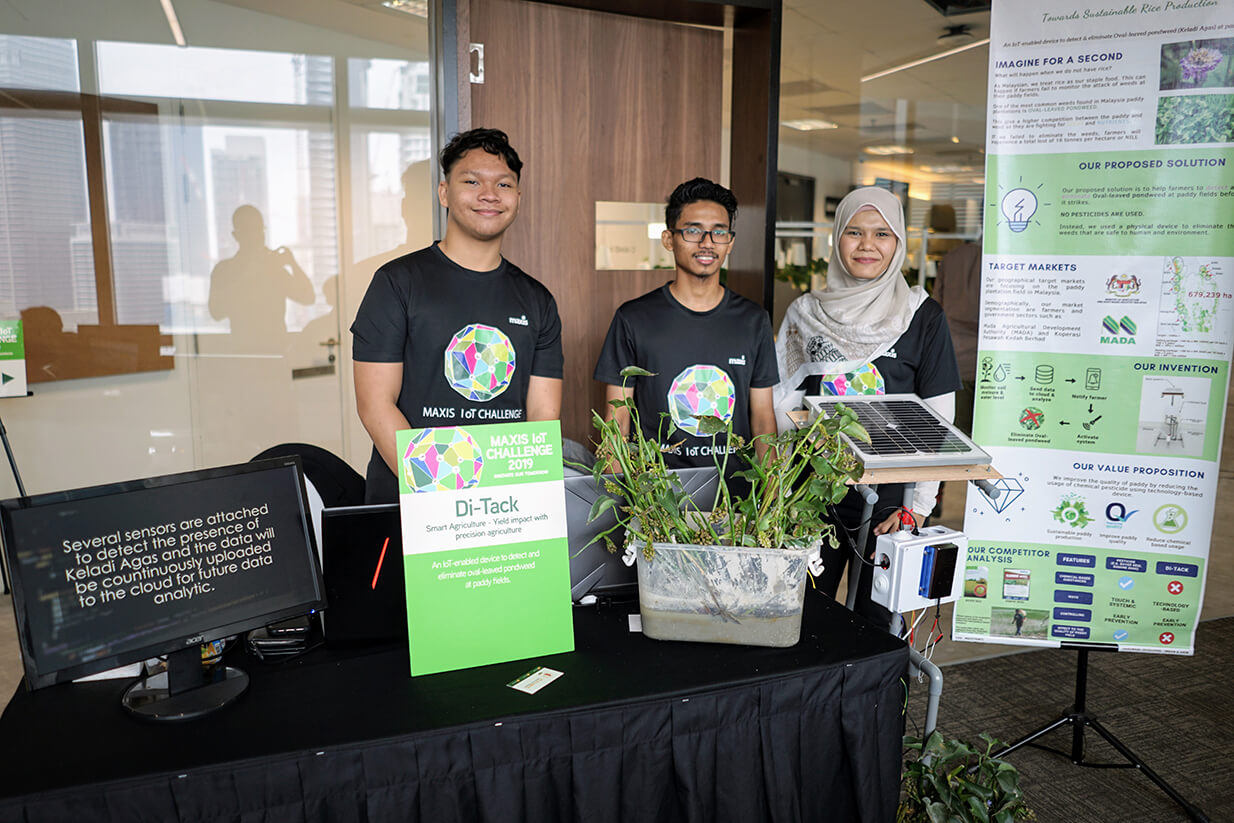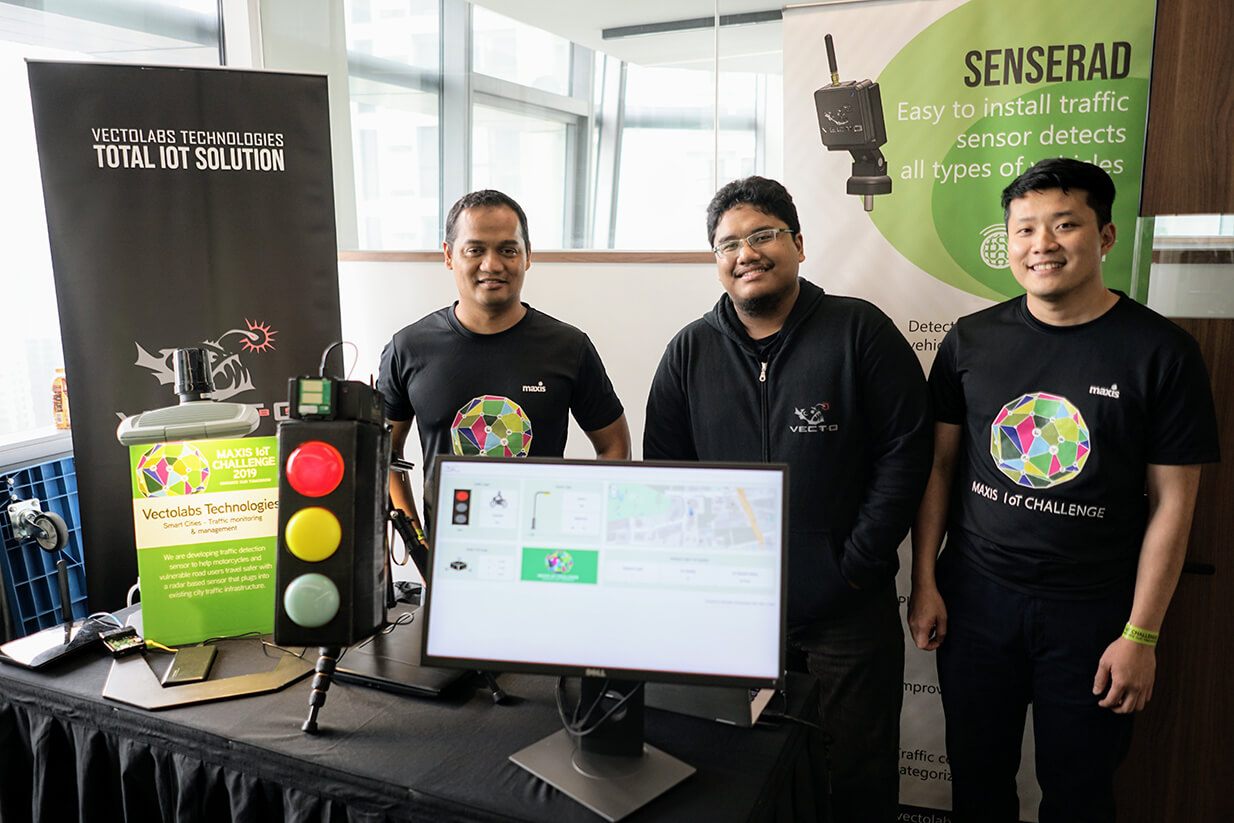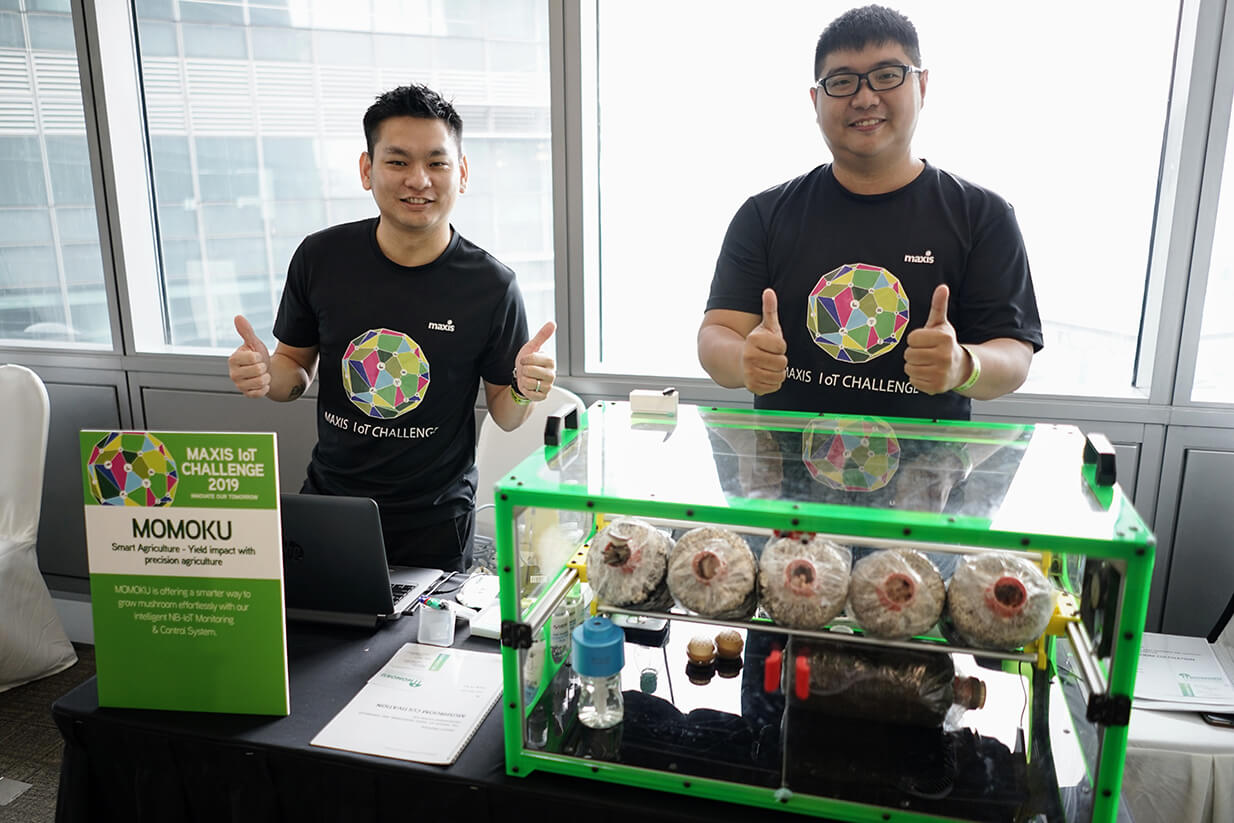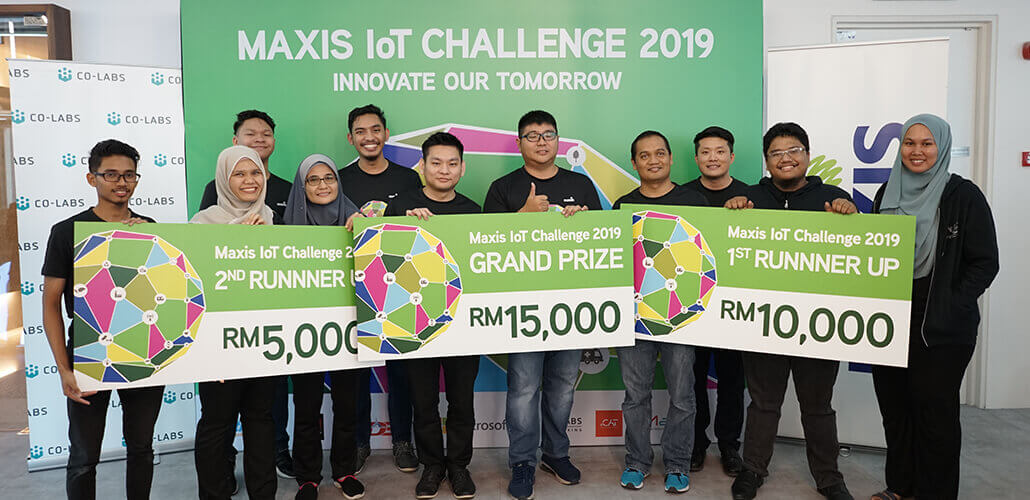How the Maxis IoT Challenge Winners Leveraged NB-IoT’s Business Potential
What happens when you get academics, entrepreneurs, and IoT device makers involved with Narrowband IoT (NB-IoT)? You will see unique, creative solutions to real-world problems. That was certainly on display during the finalist pitches
for the Maxis IoT Challenge.
The three winning teams displayed ingenuity and an ability to harness NB-IoT’s advantages to meet their specific needs.
One team found an answer for a problem faced by paddy farmers the world over; another team used NB-IoT to resolve network challenges so it could concentrate on building better devices. The third team discovered how accessible NB-IoT was even for entrepreneurs without prior IoT experience.
Making short work of weeds

NB-IoT and paddy fields might seem like an unusual combination but not for the third-placing DiTack team. The concern was the struggle of paddy farmers to manage the age-old threat of weeds.
What the team came up with was a non-chemical means, which involved using ultrasonic waves.
The waves were timed to be activated at intervals, as opposed to being constantly turned on. That way, it would ensure no significant damage was caused to either crops or farmers.
What role did NB-IoT play in making this form of weed control possible? The sensors involved would need to be powered as well as remotely controlled.
The need for an external power source was the initial hurdle they needed to surmount. In the environment of a paddy field, normal AC power would be impractical, and networks such as Wi-Fi would consume too much power and face coverage limitations.
NB-IoT allowed for the utilisation of low-power sensors that would not need to be hooked up to an external source.
The remaining challenge was to further improve on the capabilities of the solution and package it for farmers, within Malaysia and potentially beyond borders.
Empowered to focus on strengths

Second place winner Vectolabs Technologies is no stranger to Low Power Wide Area Network (LPWAN) technology, having previously developed a smart street light.
The issue faced was that with competing technologies, Vectolabs found that instead of just focusing on creating better smart devices, the team also needed to factor in the challenges of working with unlicensed spectrum devices.
By switching to NB-IoT, the company could focus on what it did best: building IoT devices, leaving the technicalities of the network to a licensed provider instead.
NB-IoT helped power their system that would create better, safer lighting conditions for motorists. The sensors would detect all manner of vehicles, including cyclists and motorcyclists – a particularly vulnerable demographic on the road.
The sensors would connect to smart street lights that could adapt to conditions, ensuring optimal lighting when road users were present. Street lighting optimisation would not only provide returns in terms of better road safety but would also allow city councils to optimise power usage and infrastructure maintenance.
The company sees NB-IoT as an important part of their future plans and that the technology itself ‘is the future.’ Often, device makers are reluctant to support emerging technologies as they worry about its long-term viability and continued support.
Vectolabs was impressed with Maxis’ demonstrated commitment to rolling out NB-IoT and providing the necessary support for customers.
Enabling future entrepreneurs

Momoku won first place by seeing a particular niche in the market that needed addressing, with NB-IoT helping them realise a polished, ready-to-market product.
What it proposed was creating a smart setup for farmers that would not involve too much complexity or risk, while providing viable returns.
Mushrooms are a particularly in-demand crop, and Momoku created a setup where farmers could start mushroom farms in shop lots.
Farmers are often left vulnerable to fluctuations in demand and supply. What the smart setup allowed them to do was control production to adjust it to demand projections.
The smart setup also helped farmers better control and monitor conditions to keep crops healthy, minimising loss from diseases.
What Momoku then did was package the farming solution and market it to mushroom farmers. It would appeal not just to existing mushroom farmers who wanted to run a smarter operation, but also to aspiring entrepreneurs.
It would require less maintenance, less human resources and even be automated to run without constant supervision. The team found that despite not coming from a technical background, thanks to Maxis’ polished NB-IoT solution and expertise, they were able to create a viable product.
Common ground
What all the winners had was a specific problem, an idea for a solution and hurdles that weres urmounted with the aid of the right tool.
The teams had different end-goals for their NB-IoT implementations but found NB-IoT to be the right fit for their needs, demonstrating just how versatile NB-IoT’s applications are.
What the winners also noted was how simple NB-IoT was to deploy, especially with Maxis’ expertise and support on hand to guide them through the process.
The Maxis IoT Challenge demonstrated that NB-IoT is a viable solution for businesses, whatever the industry, looking to embrace a smarter, IoT-enabled future.
We’re proud to be a catalyst to local entrepreneurs in finding new solutions to old problems using the latest technologies. And will continue to do so in the future.






